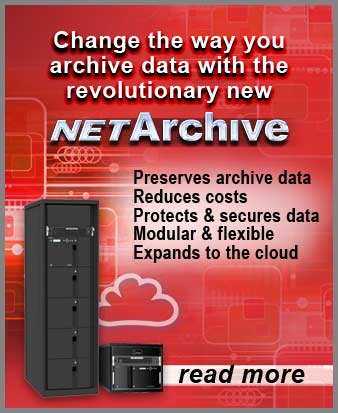The Resurgence of Optical Technology
Optical technology has been the media of choice for professional data archiving for many decades beginning with its roots in the late 1960’s with Phillips, during which time there have been an impressive number of technology turns and improvements.
For years, many organizations have trusted optical technologies to safely store their critical data. However, with the advancements in tape and disk technologies, customers have adapted these technologies for data archiving because of the speeds and capacities regardless of the lack of true archiving features.
But now, all that is changing at a rapid pace. Optical technology is beginning to enjoy a resurgence with many new improvements focused primarily on next generation BluRay™ technologies.
Just what are these exciting advancements?
- Disk manufacturers are now developing high-capacity multi-layer BluRay™ optical disks with capacities rivaling those of LTO tape
- Fujifilm is developing a 1TB optical disc that uses two-photon absorption technology (Announced 2012)
- Sony and Panasonic have released 25GB, 50GB, 100GB and 128GB media and are developing 300GB media
- Facebook has implemented a 1PB BluRay™ disc storage system with 10,000 discs and estimates that this system will reduce the storage costs by 50% and energy consumption by 80% compared to their current cold storage systems.
- Intelligent drives with advanced disc/cartridge handling mechanisms have been designed for faster throughput and to support higher capacity media
- More advanced interface and interconnect technologies are being implemented with movement toward faster industry standard components with increased reliability
Concurrently, the magnetic technology business (tape and HDD) is really shrinking with now only:
- One remaining tape media manufacturer (Sony, TDK, & Maxwell have, or are, exiting the business)
- Three tape drive manufacturers (HP, IBM, Oracle StorageTek)
- And three HDD manufacturers (Seagate, Toshiba, Western Digital)
Optical is in the News Again for All the Right Reasons
- In a September 2014 article posted on www.crn.com, regarding the storage and safeguarding of highly sensitive data at federal government locations, Dylan Riley, Director of the Office of Innovation for the US Naval Air Systems Command, was quoted as saying, “Writable optical media remains a preferred technology in many cases because of the significant longevity and durability of the media”.
- According to www.datacenterknowledge.com, Giovanni Coglitore, Facebook’s hardware engineering director, said he believed that BluRay™ could potentially creep into warmer and warmer storage tiers.
- September 2015 –The Register’s Byran Betts writes about the Return of the Disc indicating that ‘With good media, optical could save on tape conditioning plus it is not affected by magnetism, is more tolerant of temperature and is better for random access.”
Industry analysts have repeatedly echoed that optical required capacity, performance and connectivity must be improved in order to become viable again. With capacities now at 3TB per cartridge, 1.6 PB per single library, and optical performance in the multi gigabit range, Optical is back as a viable Archive storage media. As well, roadmaps outline continue capacity and performance gains for many years to come!
Will these new developments ultimately affect how you archive data?
With the new developments identified above, a new level of optical systems will emerge with capabilities rivaling those of LTO tape. These systems will change the way archiving is accomplished, reducing the overall costs of housing large amounts of unstructured data over the long-term.
We will soon see new optical solution features and functions, increased reliability, higher capacities, and yes, much, much faster performance, uniquely accompanied by the standard benefits offered by optical such as:
- Specifically designed solutions for data archiving
- True WORM superior readability and longevity (>50 years)
- Durability and resilience in a wide range of environmental conditions
- Highly resistant to natural disasters and EMP
- Green Technology
- Approx 15% lower in cost than tape over the course of a year
- Media does not require a constant power source when at rest
- Less frequent migrations due to media’s extremely low mortality rates
- Offsite storage of media does not require special environmental controls
In a recent article regarding storage media, Jason Verge, analyst on the Data Center Knowledge team, made the following statement regarding BluRay™ technology: “This is not the first time that a mature technology believed to have one foot in the grave roared back in a big way.”
It is ASTI’s prediction that optical will once again take its place as the primary technology for archiving data.
The Legacy Continues
As a leader in the development of optical technology for data archiving, ASTI’s product evolution is based upon a long history of optical technology evolving from the 1980’s. Technology forerunners are the aristocracy of optical development including: Control Data Corp, OSI, Laser Magnetic Storage, Inc., Philips LMS, Plasmon and more.
ASTI continues the legacy with groundbreaking new products and features that ultimately result in newer and more efficient methods of archiving data, improved flexibility, and a greater level of customer satisfaction.
